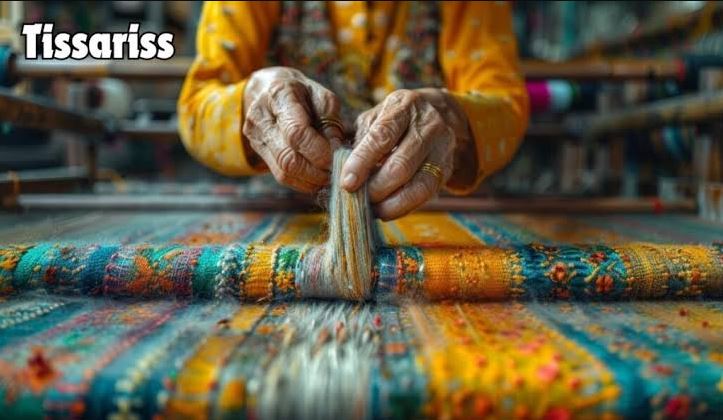Tissariss is a traditional art form with a storied history that blends intricate weaving techniques, cultural narratives, and vibrant designs. Rooted in ancient traditions, this craft has evolved into a contemporary medium for fashion and interior design while retaining its cultural significance. This article delves into the origins, materials, techniques, and modern adaptations of Tissariss to provide a comprehensive understanding of its enduring appeal.
What is Tissariss?
Tissariss is a textile art form characterized by its use of natural fibers like cotton, silk, and wool, woven into intricate patterns that often hold cultural and symbolic meanings. Originating in regions with rich textile traditions, the craft reflects local stories, beliefs, and rituals, making each piece a work of art.
Key Features
- Cultural Symbolism: Designs often depict nature, spirituality, or daily life.
- Artistic Value: Every pattern serves as a narrative of the artisan’s heritage.
- Sustainability: Many artisans use eco-friendly dyes and sustainable materials.
Materials Used in Tissariss
1. Cotton
Cotton is prized for its versatility and breathability, making it ideal for warm climates. Artisans use cotton to create lightweight and detailed designs, perfect for clothing and decorative items.
2. Silk
Silk offers a luxurious finish and is often reserved for ceremonial or high-end pieces. Its sheen and strength make it an excellent choice for vibrant, intricate patterns.
3. Wool
Wool is favored in colder regions for its insulating properties. It is commonly used to make shawls, rugs, and blankets, adding depth and texture to the designs.
Dyes and Colors
Natural dyes like indigo, turmeric, and madder root are common, providing vibrant yet earthy tones. Artisans meticulously control the dyeing process to ensure consistent and lasting colors.
Cultural and Economic Significance
1. Ceremonial Use
Tissariss textiles play a vital role in rituals and ceremonies across cultures. They are used as garments or altar cloths during weddings, births, and religious events, symbolizing blessings and continuity.
2. Economic Impact
The craft supports many artisan communities, providing them with livelihoods while preserving traditional skills. Its growing global appreciation has opened international markets, further sustaining the craft.
3. Storytelling Through Patterns
Patterns often carry symbolic meanings:
- Geometric designs: Represent life’s interconnectedness.
- Floral motifs: Symbolize growth and beauty.
- Animal imagery: Depicts strength and freedom.
Modern Adaptations of Tissariss
1. Fusion with Modern Design
Contemporary Tissariss integrates traditional techniques with modern aesthetics. Designers experiment with abstract patterns and unconventional color combinations, appealing to diverse audiences.
2. Use in Fashion
Tissariss textiles have become a staple in sustainable fashion. Their rich patterns and eco-friendly nature make them highly desirable for unique clothing and accessories.
3. Interior Design Applications
From tapestries to decorative rugs, Tissariss has gained popularity in interior décor. Its cultural depth adds a unique touch to modern spaces.
Challenges and the Future of Tissariss
Despite its appeal, Tissariss faces challenges:
- Economic Pressures: Artisans often struggle with low wages and limited market access.
- Technological Impact: While some innovations help, mass production threatens traditional methods.
- Sustainability: Ensuring eco-friendly practices amid growing demand is a constant struggle.
Support from ethical fashion movements and cultural preservation efforts can help secure a vibrant future for Tissariss.
Conclusion
Tissariss stands as a testament to the enduring power of cultural artistry. Its seamless blend of tradition and innovation ensures that it remains relevant in modern fashion and design. By supporting Tissariss artisans, we not only celebrate craftsmanship but also contribute to the preservation of cultural heritage and sustainable practices.
Quick Reference Table: Key Aspects of Tissariss
| Aspect | Details |
|---|---|
| Materials | Cotton, silk, wool |
| Techniques | Hand-weaving, natural dyeing |
| Uses | Ceremonial garments, décor, fashion |
| Modern Adaptations | Sustainable fashion, abstract patterns, interior design applications |
| Challenges | Economic pressures, technology, maintaining sustainability |
For more insights, check out the articles on Tissariss by MacBlogWeb and EspressoCoder.




